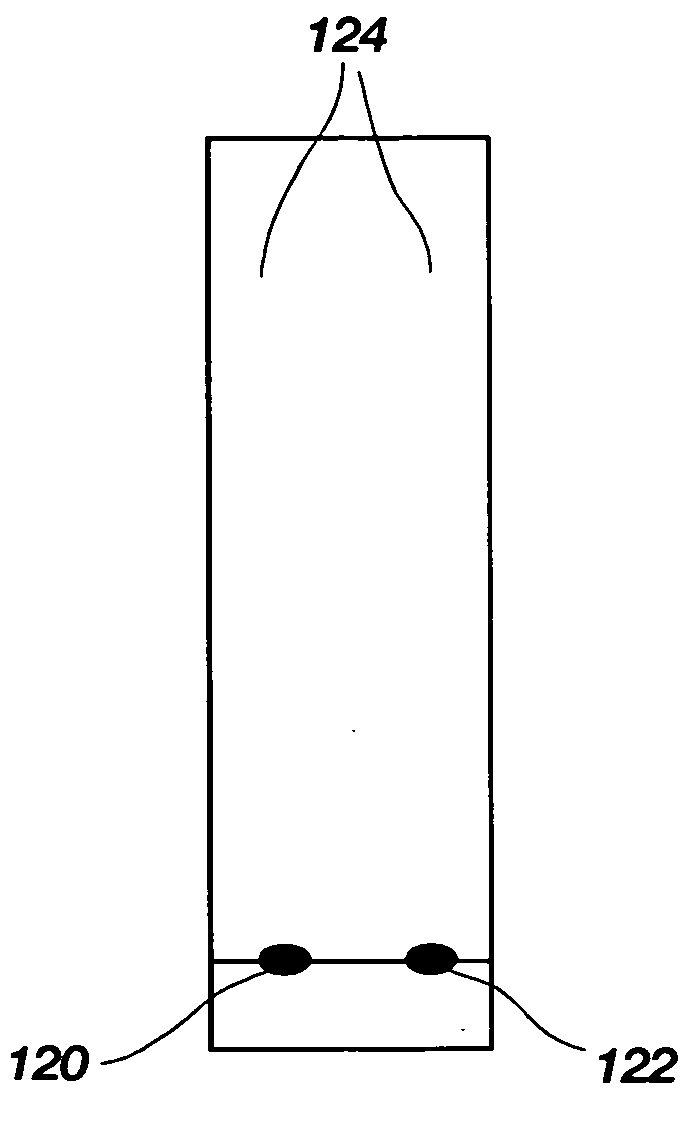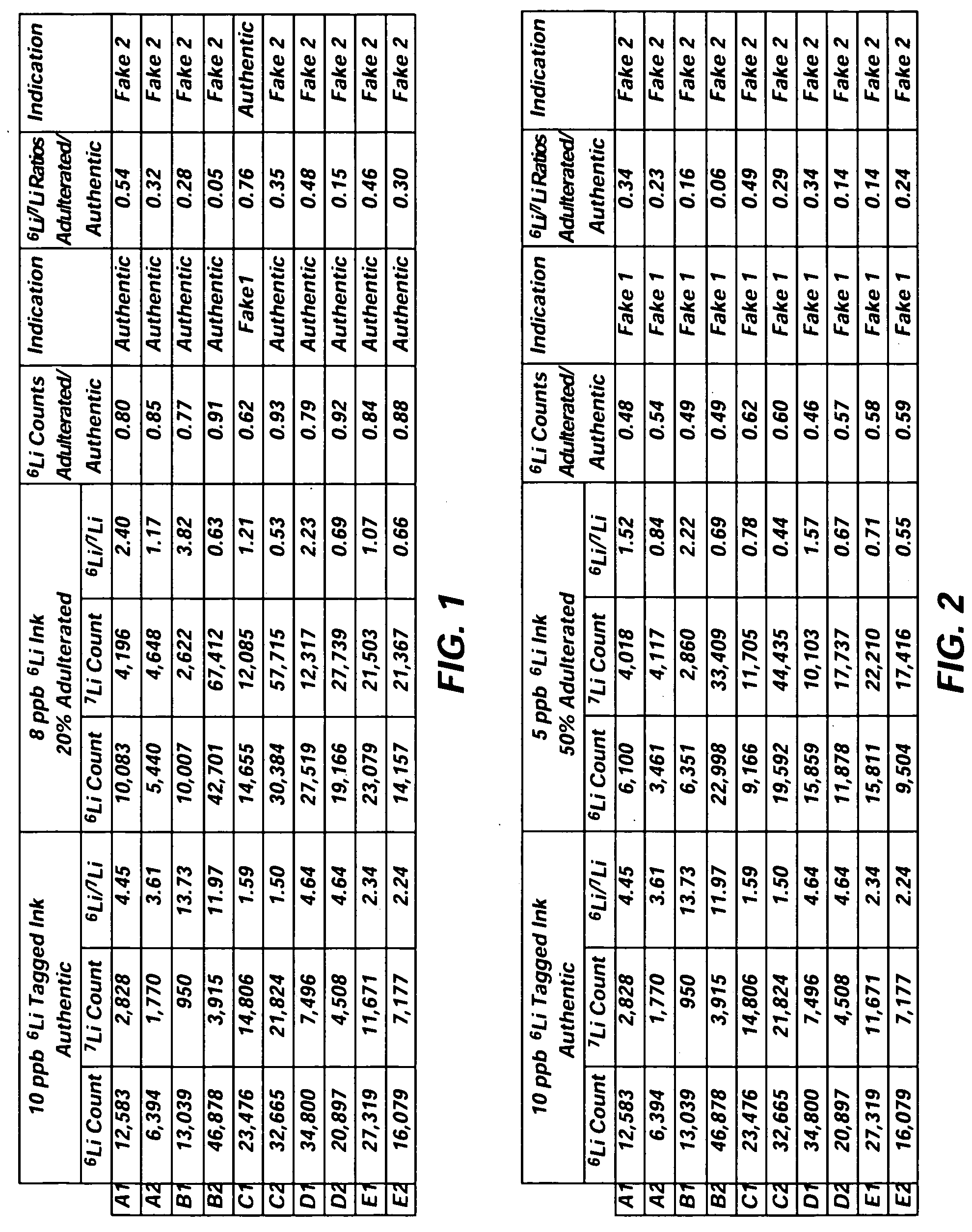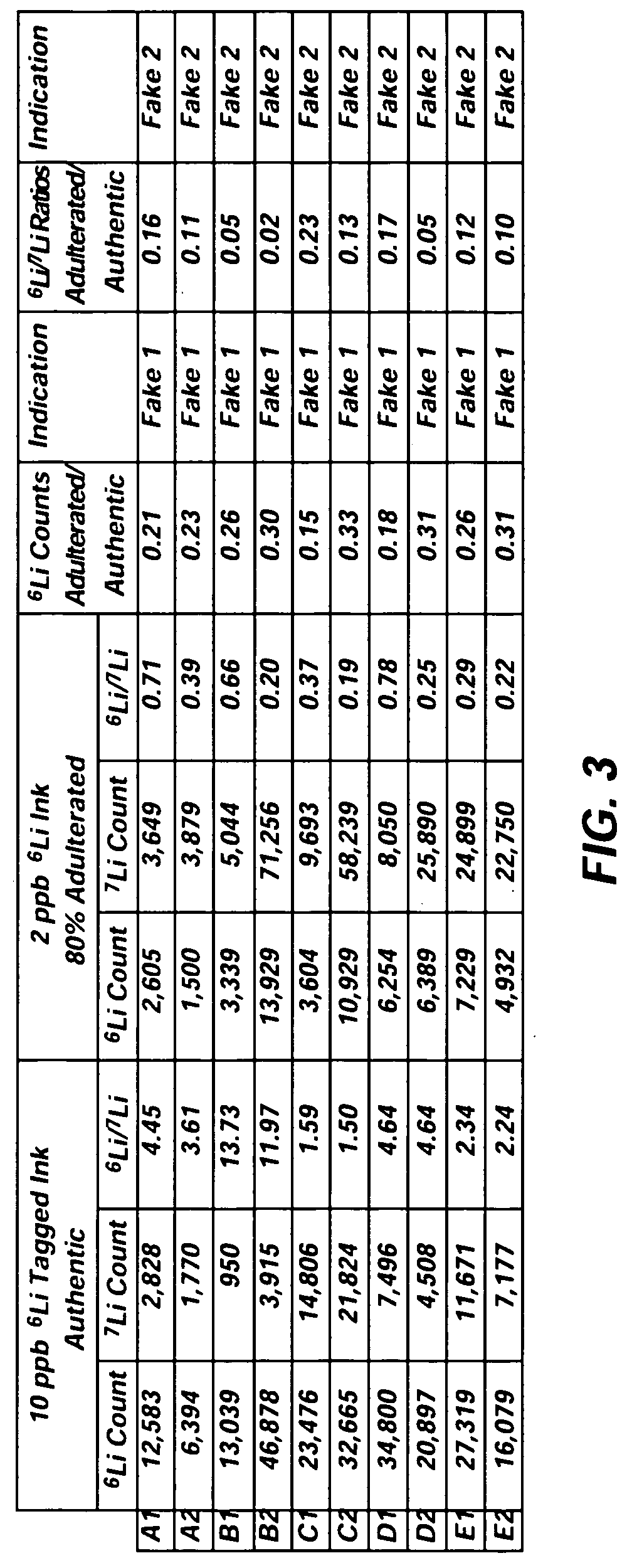Methods and systems for identifying ink
a technology of ink and ink cartridge, applied in the field of methods for identifying ink, can solve the problems of large expenditure of warranty monies paid out by ink manufacturers, damage to the reputation of ink manufacturers, and substandard ink quality
- Summary
- Abstract
- Description
- Claims
- Application Information
AI Technical Summary
Benefits of technology
Problems solved by technology
Method used
Image
Examples
example 1
Preparation of an Authentic Ink
[0055] An isotope solution enriched with the 6Li isotope was obtained from Inorganic Ventures / IV Labs of Lakewood, N.J. The 6Li isotope enriched solution contained about 1002±1 ppm 6Li and 67±1 ppm 7Li in 5.0% HNO3. Thus, it can be seen that the 6Li isotope enriched solution contained about 6.7% 7Li isotope as well. A 5 part per million (ppm) 6Li isotope stock solution was prepared from the 6Li enriched isotope solution by diluting the 6Li enriched isotope solution with deionized water. A tagged ink having a detectable marker was prepared from the 6Li isotope stock solution by adding 0.1g of the 6Li isotope stock solution to 50g of ink. The resulting ink was a 10 ppb 6Li isotope tagged ink which was labeled as the “authentic” ink.
[0056] A sample of the authentic ink was diluted 100 fold with deionized water. The diluted samples were introduced into an Agilent-4500 Inductively Coupled Plasma Mass Spectrometry (ICP-MS) instrument, obtained from Agilent...
example 2
Preparation of 20% Adulterated Ink
[0059] An ink adulterated by 20% relative to the authentic ink was prepared by mixing a sample of the authentic ink with an untagged ink of the same type and color to obtain an 8 ppb 6Li adulterated ink. Samples of the 20% adulterated ink were diluted 100 fold with deionized water. The diluted samples were introduced into the Agilent-4500 ICP-MS instrument and the cool plasma method was used to measure the isotope mass counts. As with the authentic ink samples, cobalt (Co) was added as the internal standard to compensate for any instrument drift and sample matrix effect and the instrument was not tuned to optimize the detection of light masses.
[0060] The 6Li and 7Li mass counts, as well as the ratio of 6Li:7Li are shown in FIG. 1. The 20% adulterated ink is labeled as 8 ppb 6Li Ink.
[0061] In a first comparison, using the 6Li mass counts of the authentic ink and the 20% adulterated ink, the ratio of the 6Li mass count of the adulterated ink to the...
example 3
Preparation of 50% Adulterated Ink
[0066] An ink adulterated by 50% relative to the authentic ink was prepared by mixing a sample of the authentic ink with an untagged ink of the same type and color to obtain a 5 ppb 6Li adulterated ink. Samples of the 50% adulterated ink were diluted 100 fold with deionized water. The diluted samples were introduced into the Agilent-4500 ICP-MS instrument and the cool plasma method was used to measure the isotope mass counts. As with the authentic ink samples, cobalt (Co) was added as the internal standard to compensate for any instrument drift and sample matrix effect and the instrument was not tuned to optimize the detection of light masses.
[0067] The 6Li and 7Li mass counts, as well as the ratio of 6Li:7Li are shown in FIG. 2. The 50% adulterated ink is labeled as 5 ppb 6Li Ink.
[0068] In a first comparison, using the 6Li mass counts of both the authentic ink and the 50% adulterated ink, the ratio of the 6Li mass count of the adulterated ink to...
PUM
 Login to View More
Login to View More Abstract
Description
Claims
Application Information
 Login to View More
Login to View More - R&D
- Intellectual Property
- Life Sciences
- Materials
- Tech Scout
- Unparalleled Data Quality
- Higher Quality Content
- 60% Fewer Hallucinations
Browse by: Latest US Patents, China's latest patents, Technical Efficacy Thesaurus, Application Domain, Technology Topic, Popular Technical Reports.
© 2025 PatSnap. All rights reserved.Legal|Privacy policy|Modern Slavery Act Transparency Statement|Sitemap|About US| Contact US: help@patsnap.com



